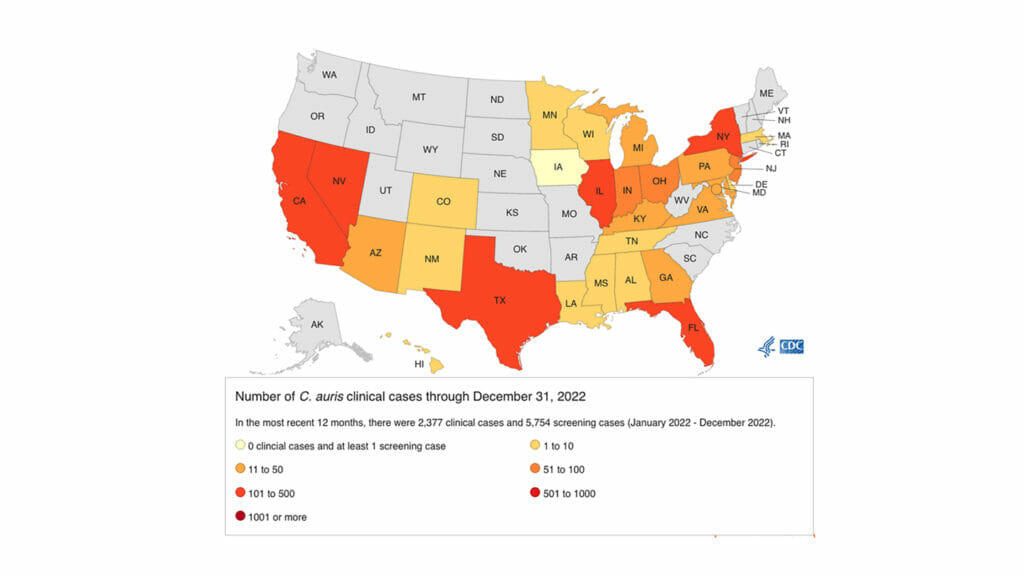
Drug-resistant Candida auris, a known threat to nursing homes, is spreading at “an alarming rate” across United States healthcare facilities, according to a new analysis of data from the Center of Disease Control and Prevention. Adding to the concern, a growing number of these cases are resistant to echinocandins, a first-line treatment, investigators reported in the study, published Tuesday in the Annals of Internal Medicine.
C. auris is highly contagious, with 5% to 10% of patients colonized with the fungus likely to develop invasive infections. Infection accounts for up to 60% of the deaths in these cases, according to the CDC. It poses the greatest risk to people who are very ill, use invasive medical devices such as ventilators, or have long or frequent stays in healthcare facilities.
Rapid rise
The first U.S. cases were reported in the U.S. in 2016. Through December 2021, more than 3,200 clinical cases (in which infection is present) and 7,400 screening cases (in which the fungus is detected but doesn’t cause symptoms) have been recorded.
“The rapid rise and geographic spread of cases is concerning and emphasizes the need for continued surveillance, expanded lab capacity, quicker diagnostic tests and adherence to proven infection prevention and control,” said CDC epidemiologist Meghan Lyman, MD, lead author of the paper.
In the current study, Lyman and colleagues measured case counts reported to the CDC by health departments, and examined the volume of colonization screening and antifungal susceptibility results from 2019 to 2021.
Drug resistance climbs
The percentage increase in clinical cases grew from 44% in 2019 to 95% in 2021, they found. Also in 2021, colonization screening volume and screening cases rose by more than 80% and more than 200%, respectively.
Although screening is not uniform in the United States, investigators were also able to get a sense of how widely these infections were spreading nationally and the efficacy of antifungal treatments. Fully 17 states identified their first cases during the 2019-to-2021 study period, and the number of echinocandin-resistant cases in 2021 was triple that in each of the previous two years, they reported.
“The rise in echinocandin-resistant cases and evidence of transmission is particularly concerning because echinocandins are first-line therapy for invasive Candida infections, including C. auris,” they wrote.

Reasons behind the increases
The investigators attributed some of the recent increase in case counts to poor infection prevention and control practices in healthcare facilities. But enhanced efforts to detect cases, including an increase in colonization screening, may also have bumped the numbers up, they theorized. The timing of the current findings also suggests that pandemic strain on healthcare systems may have also played a part in the increases, they noted.
C. auris is near the top of a priority list of fungi that the World Health Organization says pose the greatest emerging threats to public health, in part due to their increasing resistance to antifungal agents. The CDC in 2021 identified the first U.S. nursing home residents and hospital patients with candida auris yeast infections that resist all first-line antifungal treatments.
Related articles:
‘Aggressive’ steps needed to keep deadly fungus out of nursing homes: APIC
New cases of antifungal-resistant yeast infections in nursing homes alarm CDC
Early screening curbs C. auris in ventilator-assisted facilities: study
WHO turns attention to fungal infections as drug resistance builds



